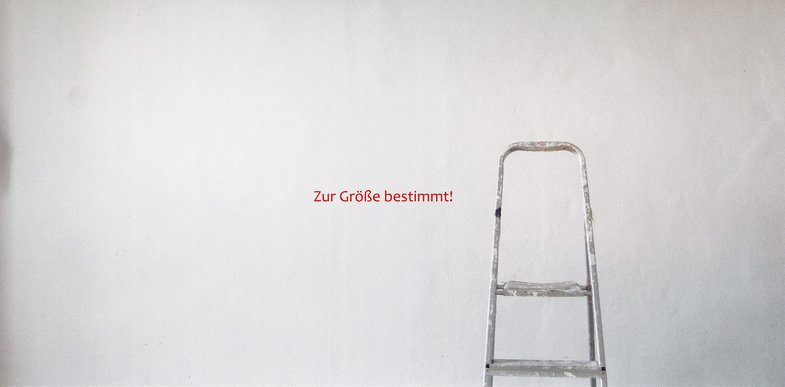
The exhibition "Zur Größe bestimmt!" is a group exhibition about the possibilities and aspects of large-scale paintings. How does "size" affect a painting? Does it provide space for details or for a lavish gesture? Should it capture the viewer, should they be sucked into the painting, or should it surprise viewers by overpowering them? Is the size related to a specific effect or a certain function? To this end, a tender was used to search for and find works from all areas of painting in its most simple definition - paint on a paint surface.


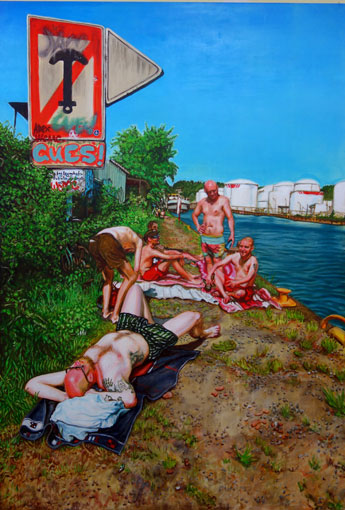
Stefan Brock is a young artist based in Dresden. In his paintings, worlds colide: Old Master meets comic book figures, ice cream ad meets social realism, and Napoleon Bonaparte becomes a Dynamo Dresden Fan sipping beer from a can, with no thought for political correctness. Brock binds opposing influences together, both thematically and aesthetically. Satire mixes with political explosiveness, while stereotypes and cliches are collected tongue-in-cheek, deconstructed and driven into different contexts. Inspired by old master painting, elements of pop culture and graffiti-littered walls, Brock develops his bizarre worlds which trigger smirks and prompt thought. (Fabian Kassner)
www.stefanbrock.com
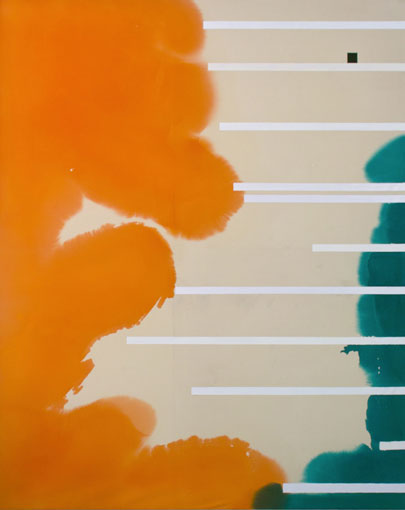
Casual observations and aimless glances of everyday life sometimes form the starting point of my paintings. Such perceptions - the illumination of a room, a certain colouring of the walls, the merging of light and space - become the starting point of my work. Peculiar moments in which light, colour, space and time all coincide. In memory they return as images.
The majority of my paintings are concentrated on just a few colours and their shades. Overall, boundaries, borders, overlaps, transparencies and the different consistency of colours are what occupies me the most.
I also always see a painting as a projection surface for the viewer, as a mirror or emotional space in which the way of thinking of both the viewer and the painter becomes visible. Perhaps painting can be described as pre-conceptual thinking and acting. Contents are realised here, which cannot be grasped textually.
Painting and chess:
To put it somewhat simply, one could say: Painting is like playing chess. Both metiers are very old. Both have in common the defined playing field and the pawns - in painting these are paint surface, paint and form - and yet there always are new connections and new possibilities.
www.friedhelmfalke.de
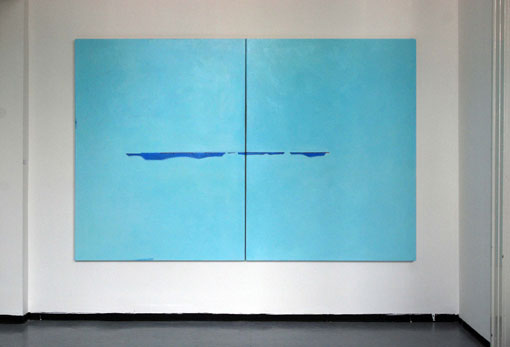
My motifs are inspired by what I see in nature, architecture, forms and structures. Stripped to the bone, unique vital elements produce a new authentic world. My work emphasises plasticity through its surface materials, from wooden plates, to the finished back surface of etching plates. Despite the minimalist structure, the viewer gets a unique view of my deep emotional experience through the distinctive colour palette.
Spatial phenomena such as shadows, reflections and silhouettes are my protagonists. My inspirations aren’t often obvious to the spectators, which invites them to free their imagination. This is how the paintings on canvas, works on paper and murals are born. A large variety of materials enriches my work as an artist.
www.julia-gutkina.de
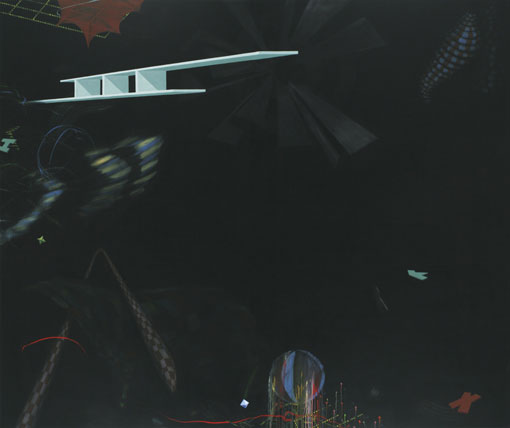
Peter Nikolaus Heikenwälder's imagery is complex, with a wide variety of painting media. From amorphous, disembodied forms, organic-looking bodies, through lines, surfaces, running traces of paint, chalk lines, ornamental elements, to strict stereometric spatial objects, he uses everything that painting has developed into a repertoire of forms. Often they are inspirations of historical drawings or scientific illustrations, which form the basis of a work that has just begun, and which then become part of the composition through contouring and overpainting in a longer process. In the end, everything looks new and unpredictable. The language of form is surprising and seems to hold a virtually infinite expansion potential. It is as if painting were a cosmos after a big bang, opening up infinite new possibilities for forms and elements and in which everything that happens, happens for the first time. (Elke Kramer, Bremen)
www.peter-nikolaus-heikenwaelder.de
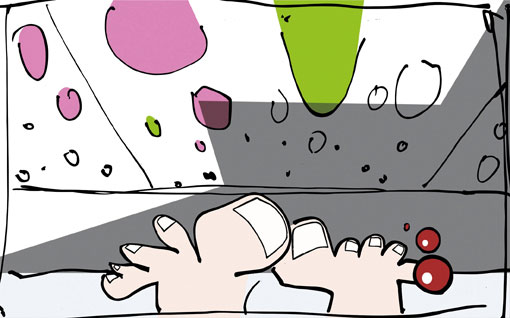
In Thomas Hoffmann's paintings, the preference for the succinct lines as opposed to planes and the conscious reduction to essentials, show how much he turns to the mind of the beholder and plays an intellectual game with him/her. As striking as his paintings are, as convincing are the titles, and vice versa. What is initially noticeable in his largest works are the often cheerful colours and the creative structures that recall the style of Popart, surrealism or expressionism. When one immerses oneself in the pictorial contents, it quickly becomes clear that behind the superficial harmless and beautiful first impression, in many cases a statement lies hidden which is anything but harmless and which could often already have been discerned from the title. (Klaus Küster)
www.thomashoffmann.it
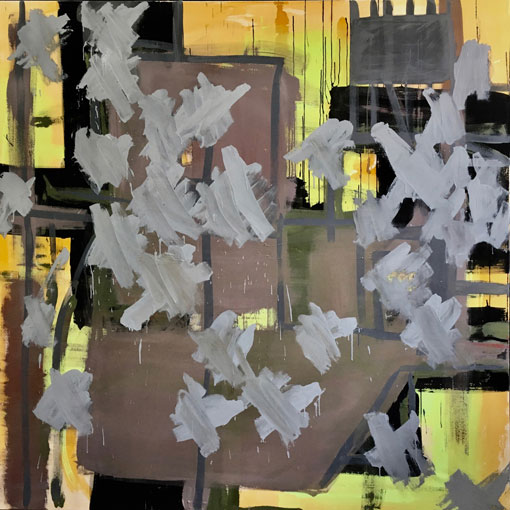
My work is based on texts about natural, philosophical and technical developments and their effects on the world we live in. I visualise what I read and experience. I try to classify what is happening around me with images and objects. For this, I use a wide variety of materials and techniques, each of which is dependant on what story I tell, what medium "it" demands. With "Target" I am playing with the means of free painting. I go back to an abstract "primeval language" which is told by means of paint, planes and their composition. The viewer will decipher this story for him/herself, depending on what his/her perspective is.
www.martina-justus.de
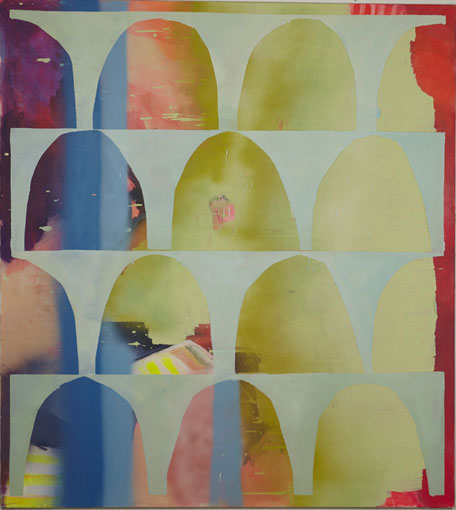
„Order is half of life!“ is a german saying, which might not have an english
correspondence. In any case, it´s a terrible sentence. Not only is it closely related to authoritarian lectures, it also simply isn't true. Order is the entirety of life. At least this is what Franziska Klötzler is experiencing in her artistic work. A painting that sovereignly self-asserts itself as a painting and is constructing and deconstructing its own standards and conventions in autonomous sign systems. Patterns and layers that realign with digitality and try to make the intangible available and codable. This formally supplements an already existing, animated order which yet might become visible, accessible.
www.franziskakloetzler.com

My paintings are marked by its references to recent political, economic and social events and affairs. It is determined by its content and meant to convey a message related to highly topical debates. The fundamental changes and developments of recent years like digitisation, continual monitoring and surveillance, but also terror, violence and the globalisation process, are constituents of my work and motivate my painting.
All these changes are increasingly intangible and communicated through the media in an indirect way which I try to reflect on in form and content. Pixels and spray paint for example serve as a leitmotif to represent systematic disinformation. Letters, codes, numbers or grids may on the one hand symbolise the continuous flood of information. On the other hand they refer to the idea of total control through reason and technology. In general I am interested in capturing the zeitgeist of an era that is characterised by radical changes, dissolution, fear and destruction. Through the process of painting, speed comes to a standstill which - for me - is the prerequisite for gaining a better picture of what is actually happening around us.
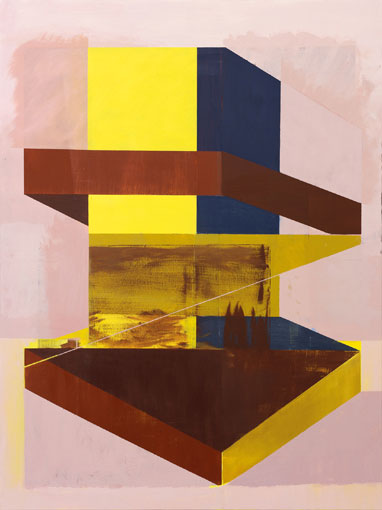
The visual foundation for my work is public space. I pursue clear and striking scenes, which are formed out of the reduced surfaces that make up part of our urban living space. I am interested in places and architecture which are obviously the mark of ordinary human influences. The subtle compositions which I find therein, form the foundation for my artistic practice. It is not my intention to create perfectly crafted copies of the scene. My artistic response to the aforementioned spaces of intrigue, happens freely and intuitively. I work by drawing from my visual memory. However, I also look for a particular formal language. Through painting I dedicate myself to the fundamental questions of the medium. The painting process comes to life through the interplay of space and non-space, surfaces and lines. The colour choice is oriented towards the study of both classical (traditional colouration, studies of nature etc.), as well as of modern and commonly used colour (such as those found in advertisement and pop culture).
www.ludwigkupfer.de
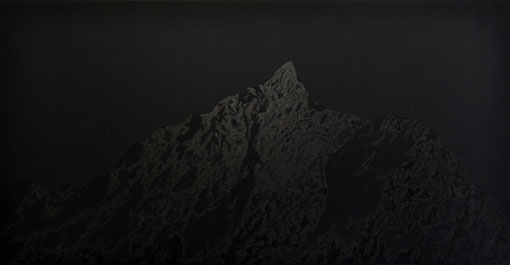
"Monuments of my personal history" is a monument to the necessary time it took for the artist to undergo a vital transformation. Mourning, self deception, acceptance, truth and change are the phases the artist went through while working on this project.
The transformation of the artist was parallel to the time it took her to represent the two mountains in this work: Devil´s Peak in Cape Town and Teufelsberg in Berlin.
The historic information, events and other stories about Devil's Peak and Teufelsberg are interweaved with the personal life experience of the artist, becoming a meta history that questions not only the one-sided narrative character of history but also the way the influence of history and personal life are both taking part in the perception of monumental places.
What weighs heavier: that which you experience in a place or the history you know about that place?
www.sandonis.com
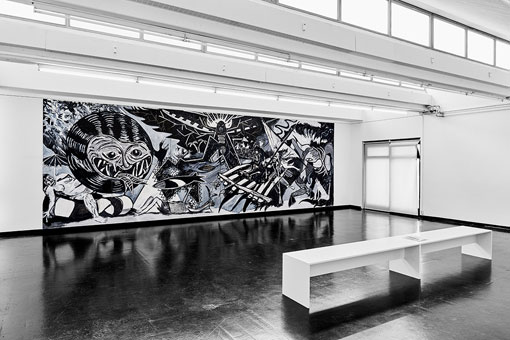
This apparent reference to Picasso's "Guernica", Géricault's "The Raft of the Medusa" or Immendorf's “Café Deutschland” series, can be understood as an iconological analysis. It is not a question of raising a warning finger using striking and familiar vocabulary, but rather of how one can take a position and make a statement as an artist (and more specifically, as a painter) in the 21st century.
If pictorial means alluding to "The Great Fear" are used in the painting, it is only to show that a similarly desolate state as in previous epochs and times prevails at the moment, and one must ask all the more urgently why long negotiated contents and forms, still or again have their justification.
As an attentive consumer and part of this society, one must note that there is a sad renaissance of an industry of fear, that denominations and membership of religious communities are associated with prototypical and racist ideologies in public rallies and interest groups, that anti-democratic tendencies are strengthening, and that blind mobs are stirring up fear - to name but a few examples.
www.sebastian-troeger.de